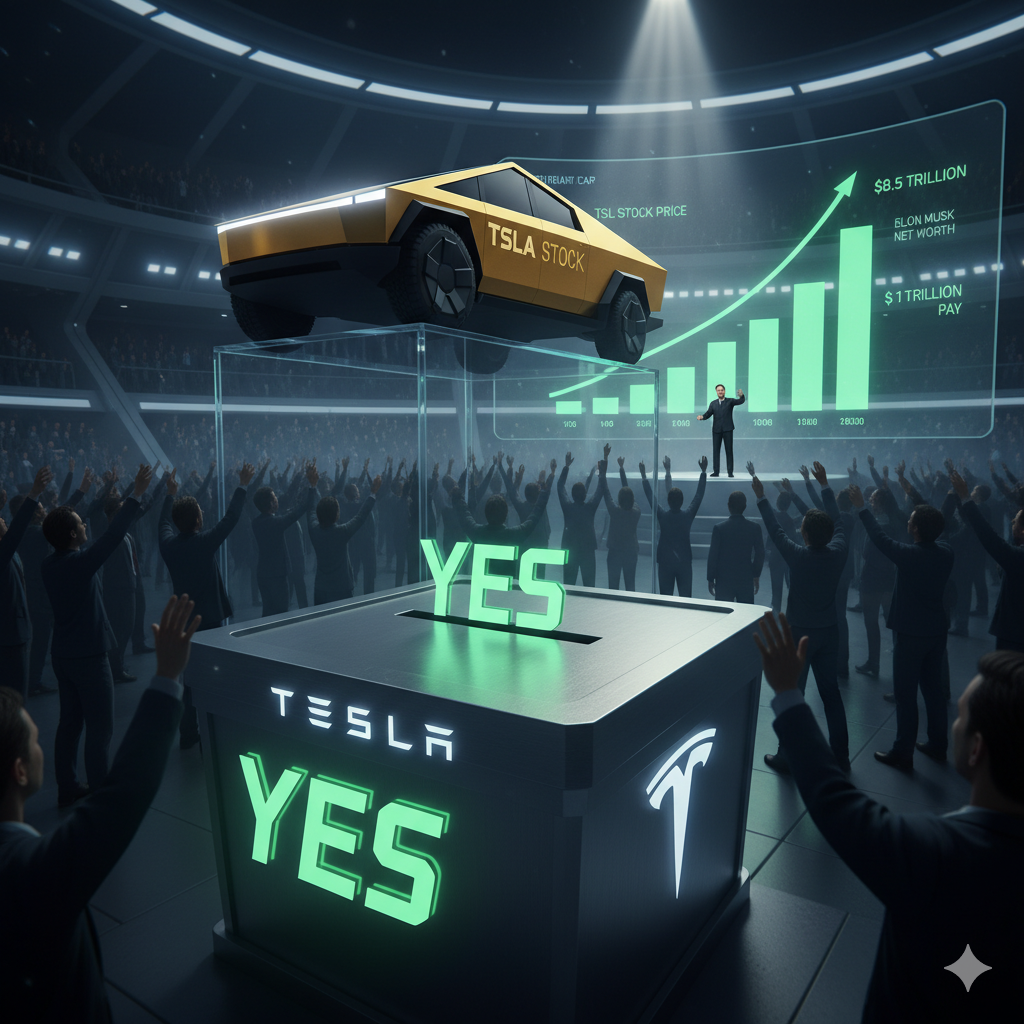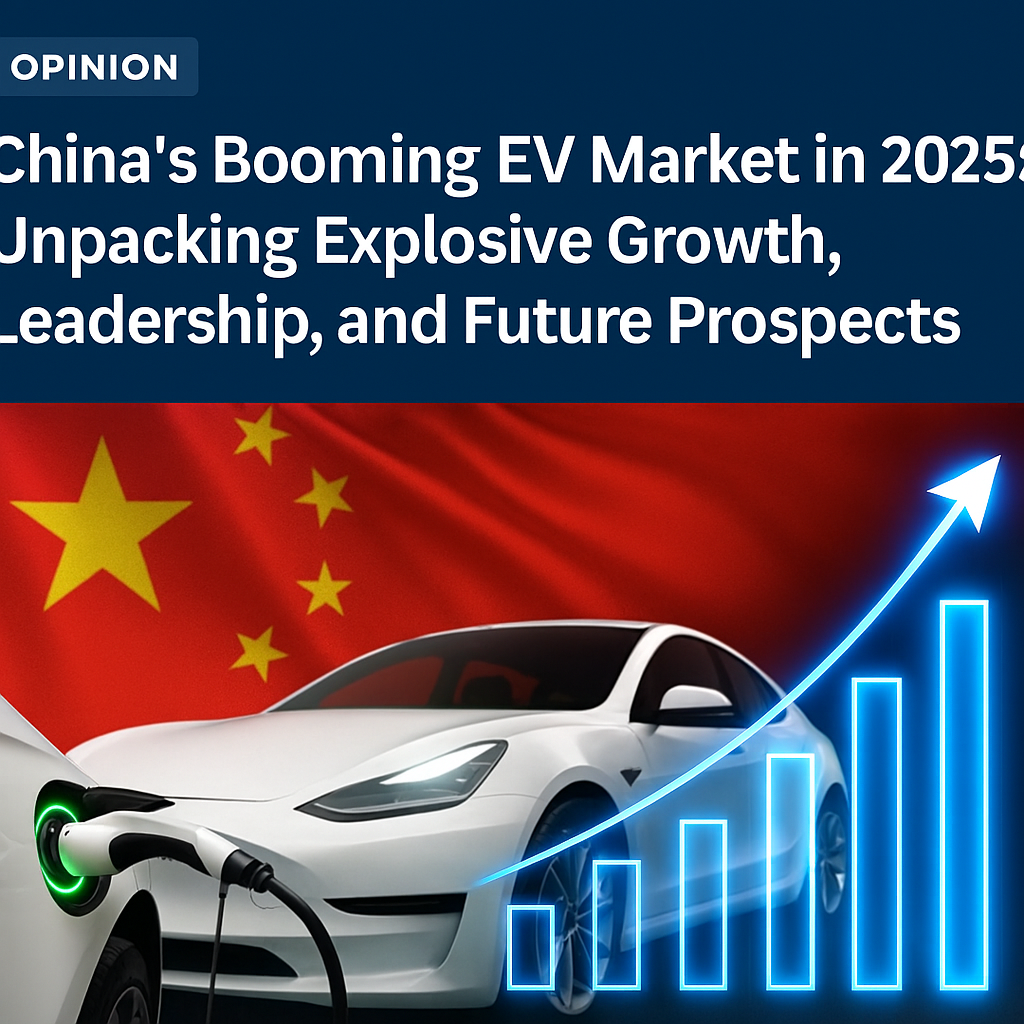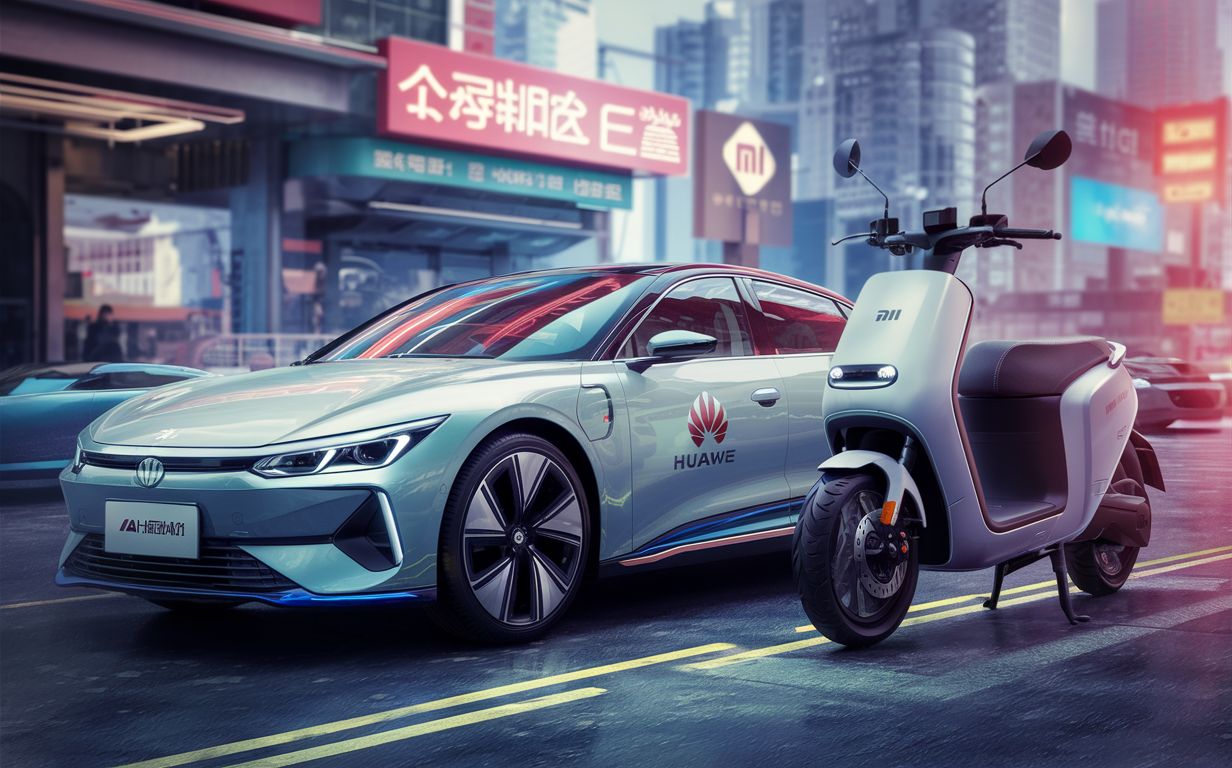Auto
🤯 The $1 Trillion Question: Why Shareholders Just Voted ‘Yes’ on the Elon Musk Pay Package

It was the vote that captured the attention of every major financial news desk, from Silicon Valley to Wall Street. The Tesla shareholder meeting recently concluded with a resounding “Yes” to one of the most unprecedented compensation packages in corporate history, potentially worth up to $1 trillion for Elon Musk.
For those tracking the volatility of tesla stock price or wondering about the next chapter for tsla, this decision is more than just a headline—it’s a critical inflection point. This wasn’t about a simple salary increase; it was a high-stakes referendum on the CEO’s indispensability and a bold bet on the company’s transformation into an AI and robotics behemoth. Let’s unpack the biggest business news today and what it means for your portfolio.
The Anatomy of a Trillion-Dollar Deal: What is the Elon Musk Pay Package?
When you hear the figure $1 trillion, it sounds like something out of a science fiction novel, which, in the context of Elon Musk and Tesla, is probably appropriate. To understand the recent vote, you first need to look back.
The current approved compensation is a replacement for a 2018 package that a Delaware judge had previously struck down. The new plan is designed to be purely performance-based, meaning Musk receives virtually no salary and only gets paid if the company hits some truly astronomical targets.
A Breakdown of the Requirements:
- The Valuation Hike: To unlock the full value, Tesla’s market cap must soar from its current valuation (roughly $1.5 trillion at the time of the vote) to an astounding $8.5 trillion over the next decade.
- Operational Milestones: The pay package is divided into 12 tranches of stock. Each tranche unlocks when Tesla hits a market value target AND a key operational milestone. These include:
- Delivering 20 million vehicles.
- Achieving ambitious revenue and operating profit goals.
- Rolling out 1 million robotaxis and mass-producing the Optimus humanoid robot.
In short, the musk pay package is a massive, long-term incentive to keep Elon Musk’s focus laser-sharp on generating unprecedented growth.
Key Insight: The structure aligns Musk’s personal fortune—and future Elon Musk net worth—directly with the long-term success of the company’s valuation. Shareholders are essentially saying: “We will pay you a historic amount, but only if you deliver a historic return for us.”
The Shareholder Showdown: Why the Tesla Vote Was So Contentious
The tesla pay package was far from a unanimous decision. While the ultimate vote secured over 75% approval, it ignited a furious debate among investors and corporate governance experts.
The Argument For:
Supporters, including major institutional investors, argued that Musk is the ultimate “key man.” They believe that without his “singular vision” and relentless drive, the innovative spirit that turned TSLA from an electric vehicle niche player into a technology giant would vanish.
- Retaining the Visionary: The board warned that failing to approve the compensation could lead to Musk diverting his focus to his other ventures (like SpaceX or xAI), which they claimed would be catastrophic for TSLA stock performance.
- The Performance Precedent: Proponents point out that the 2018 package saw the company surpass every single aggressive metric, creating hundreds of billions in value for all shareholders.
The Opposition’s Concerns:
Opponents, like Norway’s sovereign wealth fund, balked at the sheer size of the award and the significant risk of shareholder dilution.
- Dilution and Size: A $1 trillion package is, by any measure, excessive and sets a concerning precedent for corporate governance. It means new shares are issued, diluting the value of existing shareholder stakes.
- Key-Man Risk: Critics argue that tying the company’s future so completely to one person—the “key man risk”—is fundamentally unsound business practice, regardless of who the person is.
TSLA Stock and Market Cap: What Happens Next?
For current and prospective investors, the most immediate question is: How does the approved elon pay package affect tesla stock?
Short-Term Stock Reaction
In the immediate aftermath of the elon musk pay package vote, the tesla stock price saw a mixed reaction. While some initial selling occurred—likely profit-taking or a reaction to the sheer cost of the package—the stock quickly showed signs of stabilizing or even a modest rebound in after-hours trading. The approval removed a major cloud of uncertainty.
- Uncertainty Removed: The vote confirms that Musk remains firmly committed to Tesla‘s ambitious roadmap, giving investors confidence in the long-term strategy centered on AI, robotics, and autonomy.
- Focus on Fundamentals: With the drama of the tesla shareholder meeting behind it, the market can now refocus on the company’s core operational metrics, such as vehicle delivery growth and profitability.
The Path to an $8.5 Trillion Tesla Market Cap
The long-term impact on tesla market cap is entirely tied to Musk’s ability to execute on the stated goals. The approved compensation package is essentially a blueprint for how the company intends to justify its massive valuation:
- AI & Robotics Transformation: The plan makes it clear that Tesla is not just a car company; it’s an AI company that happens to make cars. Success relies on winning the Robotaxi race and deploying the Optimus robot at scale.
- Unprecedented Scaling: Hitting an $8.5 trillion market cap means Tesla must dominate not only the EV sector but also new markets like energy, AI, and robotics, effectively becoming one of the most valuable companies in world history.
The performance metrics are designed to act as a rising tide that lifts all boats: if Musk gets the shares, it means all existing shareholders will have seen a massive appreciation in the value of their tsla holdings.
📊 Key Milestones for the Elon Musk Pay Package (The Trillion-Dollar Challenge)
The pay package is split into 12 performance tranches. To unlock each tranche (and earn a portion of the stock grant), Tesla must hit a compounded Market Capitalization target and a corresponding Operational Milestone target.
Target Category Milestone Goal (12 Tranches in Total) Potential Impact on TSLA Stock Financial Goal (Market Cap) $8.5 Trillion (Required to unlock the full package) A 460%+ increase in Tesla’s market cap from its value at the time of the vote, making it one of the most valuable companies globally. Initial Market Cap Goal $2.0 Trillion (First major tranche goal) Sets the immediate financial goal for the company’s valuation growth, keeping the tsla stock price on a steep upward trajectory. Operational Goal: Vehicle Delivery 20 Million Vehicles Delivered (Total over the package term) A massive scaling of the core EV business, demonstrating Tesla’s ability to achieve unprecedented production volume. Operational Goal: Autonomy/Software 10 Million Active Full Self-Driving (FSD) Subscriptions Proves the successful monetization and widespread adoption of Tesla‘s AI/software capabilities, a crucial driver for the high valuation. Operational Goal: Robotics 1 Million Optimus Humanoid Robots Delivered Confirms Tesla‘s successful diversification and entry into the high-potential robotics market as a core revenue stream. Operational Goal: Mobility 1 Million Robotaxis in Commercial Operation Validates the shift from consumer vehicle sales to a lucrative, high-margin, automated ride-hailing network. Profitability Goal $400 Billion in Adjusted EBITDA (Required over four consecutive quarters) An exponential increase in core profitability, solidifying the long-term financial health necessary to support the massive valuation. Time Frame 10 Years (Musk must remain CEO for at least 7.5 years to vest) Establishes a long-term commitment from Musk to ensure sustained focus on these “moonshot” goals, protecting shareholders’ investment.
Conclusion: The Future is a Trillion-Dollar Bet
The elon musk pay package is not merely compensation; it’s a strategic corporate plan disguised as a bonus. By overwhelmingly approving the deal, the shareholders of tesla have doubled down on their belief that Elon Musk is the only person capable of navigating the company’s hyper-aggressive expansion into new technological territories.
The success of TSLA over the next decade will be the ultimate measure of whether the $1 trillion gamble was a stroke of genius or a cautionary tale. It remains the top story in business news today, and its fallout will define corporate executive compensation for years to come.
Discover more from Startups Pro,Inc
Subscribe to get the latest posts sent to your email.
Auto
Upcoming Suzuki Fronx XUV Launching in May 2026: All the Buzz About Suzuki Pakistan

The launch of the Suzuki Fronx XUV in Pakistan, scheduled for May 2026, has generated immense excitement throughout the Pakistani automotive market. Marking Suzuki Pakistan’s entry into a new category with the introduction of the XUV segment, the Fronx aims to bridge the gap between hatchbacks, sedans, and SUVs, offering a unique combination of practicality, performance, and style that resonates with both young professionals and families.suzukipakistan+1
Expected to be locally assembled, the Suzuki Fronx introduces a fresh mobility option that is both efficient and technologically advanced. Key highlights announced so far include a 1.5L K-series engine equipped with hybrid technology, six airbags ensuring comprehensive safety, ABS and Electronic Stability Program for enhanced handling, and a 9-inch infotainment system compatible with Android Auto and Apple CarPlay. Stylish LED daytime running lights and automatic headlamp functions add a touch of sophistication that aligns well with modern consumer expectations.pkrevenue+2
This launch is strategically significant for Suzuki Pakistan as it targets the vast segment of hatchback and sedan owners—more than half of the local automotive market—which indicates Suzuki’s intention to expand its footprint with a versatile, lifestyle-oriented vehicle. By launching the Fronx, Suzuki is positioned to not only captivate a broad customer base seeking advanced features but also to elevate safety standards which have historically been a concern in the local market.nascon+1
When compared to competitors, the Suzuki Fronx promises competitive fuel efficiency, advanced safety features, and modern tech comforts that could set it apart in the emerging XUV segment. This positions Suzuki to potentially redefine consumer expectations and pave the way for future innovations tailored to Pakistani drivers’ evolving needs.carandbike+1
Overall, the Suzuki Fronx XUV is more than just a new model; it symbolises Suzuki Pakistan’s commitment to innovation, localisation, and customer-centric growth. The buzz surrounding its launch highlights its anticipated impact on the automotive landscape in Pakistan, making it a launch to watch closely for enthusiasts and everyday drivers alike.suzukipakistan+1
Discover more from Startups Pro,Inc
Subscribe to get the latest posts sent to your email.
Auto
China’s Booming EV Market in 2025: Unpacking Explosive Growth, Leadership, and Future Prospects

China’s electric vehicle (EV) market is witnessing an unprecedented surge in 2025, positioning the country as the global leader in new energy vehicle (NEV) adoption and innovation. Recent data shows remarkable trends that highlight China’s rapid growth in this sector, promising an exciting future for EVs domestically and internationally.
Robust Growth in NEV Sales
In the first half of 2025 alone, China’s passenger vehicle sales climbed to approximately 10.9 million units, marking a solid 10.7% year-over-year increase. This growth is overwhelmingly driven by New Energy Vehicles, which surged 33% to about 5.46 million units sold. Notably, traditional internal combustion engine (ICE) vehicle sales declined by 5.2% during the same period. This shift underscores a transforming market, where NEVs now make up more than half—50.1%—of the passenger vehicle market, surpassing conventional cars for the first time.
Battery electric vehicles (BEVs) lead this charge, experiencing a 37.6% sales increase to 3.33 million units, outpacing plug-in hybrids (PHEVs), which grew 26.5%. BEVs now command 61% of NEV sales, a trend illustrating a clear preference for fully electric transport solutions in the Chinese market.
China’s Market Leadership and Export Expansion
China is not just dominating its own EV market but also making a significant impact globally. In 2025, Chinese EV manufacturers exported vehicles to over 200 countries, generating nearly $48 billion in revenue. Europe remains the primary destination, accounting for about half of all exports, with emerging markets in Asia, Latin America, the Middle East, and Africa rapidly increasing their adoption of Chinese-made EVs. Exports to Africa grew by an astonishing 184% year-over-year, showcasing the expanding global footprint of China’s EV industry.
Government Policies and Industry Evolution
China’s government has played a vital role in nurturing the EV boom, initially through subsidies and purchase incentives that spurred mass adoption. However, 2025 marks a strategic turning point. The government has signaled the end of direct subsidies and omitted EVs from the list of key strategic industries in the latest five-year development plan (2026-2030). This move reflects confidence in the sector’s maturity and readiness to compete without heavy-handed support, shifting towards market-driven growth and international competitiveness. While these changes may induce some industry restructuring, they also present opportunities for innovation and consolidation among leading manufacturers.
Future Prospects and Challenges
Looking ahead, the Chinese EV market is poised for exponential growth, underpinned by continuous technological advancements and increasing consumer acceptance. The full-year forecast for 2025 estimates NEV sales to reach around 15.5 million vehicles, accounting for nearly half of all passenger vehicles sold.
Nonetheless, challenges remain. The industry must navigate reduced government subsidies, rising competition, and the need to sustain export momentum amid global trade tensions. Additionally, transitioning from plug-in hybrids to pure battery electric vehicles will require sustained innovation, especially in battery technology and infrastructure development.
Conclusion
China’s EV market is a compelling story of transformation and leadership. With NEV sales surpassing half of the domestic market and exports penetrating every major global region, China is reshaping the automotive landscape. As subsidies fade, the strength of this sector will increasingly depend on innovation, consumer demand, and its ability to adapt to global market dynamics. For anyone observing the future of transportation, China’s journey is a vivid example of exponential growth driven by vision, policy, and technological progress—all unfolding in real time.
This dynamic market evolution not only sets the tone for global EV trends but also paves the way for a cleaner, electrified future powered by innovation and sustainable mobility.
Discover more from Startups Pro,Inc
Subscribe to get the latest posts sent to your email.
Auto
China’s Electric Vehicle Revolution: How Tech Giants like Huawei and Xiaomi are Shaping the Future of E-Mobility

Introduction
China has been leading the electric vehicle (EV) revolution in recent years, with major advancements being made in the automotive industry by consumer electronics businesses like Huawei and Xiaomi. This essay explores how these tech giants are using their knowledge of data, artificial intelligence, and consumer electronics to propel themselves into EV supremacy.

The Rise of Electric Vehicles in China
China has emerged as a global leader in EV adoption, with government support, environmental concerns, and technological advancements driving the shift towards sustainable transportation. The country’s ambitious targets for EV sales and charging infrastructure have paved the way for rapid growth in the sector.
Tech Giants Enter the Automotive Industry
Huawei and Xiaomi, renowned for their smartphones and consumer electronics, have expanded their portfolios to include electric vehicles. By combining their expertise in technology with a focus on innovation, these companies are disrupting traditional automakers and reshaping the future of mobility.
Huawei’s Approach to E-Mobility
Huawei’s entry into the automotive market has been marked by its emphasis on connectivity, autonomous driving capabilities, and smart features powered by AI. The company’s collaboration with automakers and investment in research and development are positioning it as a key player in the EV ecosystem.
Xiaomi’s Disruption in the Electric Vehicle Space
Xiaomi’s foray into electric vehicles is driven by its vision of creating smart, connected cars that offer seamless integration with other devices. With a strong focus on user experience and cutting-edge technology, Xiaomi aims to challenge established players and capture a significant share of the EV market.
The Convergence of Data and Artificial Intelligence in E-Mobility
Data analytics and AI play a crucial role in enhancing the performance, efficiency, and safety of electric vehicles. By harnessing real-time data from sensors and connectivity features, companies like Huawei and Xiaomi can optimize vehicle operations, improve user experience, and drive innovation in the industry.
Challenges and Opportunities for Consumer Electronics Companies
While consumer electronics companies bring unique strengths to the automotive sector, they also face challenges such as regulatory hurdles, competition from traditional automakers, and establishing brand credibility in a new market. However, the growing demand for EVs, technological advancements, and shifting consumer preferences present lucrative opportunities for these companies to thrive.
Conclusion
As China accelerates towards EV dominance, consumer electronics companies like Huawei and Xiaomi are playing a pivotal role in shaping the future of e-mobility. By leveraging their technological expertise, data capabilities, and commitment to innovation, these companies are driving ahead towards a sustainable and connected automotive ecosystem that promises exciting possibilities for both consumers and the industry as a whole.
Discover more from Startups Pro,Inc
Subscribe to get the latest posts sent to your email.
-
Digital5 years ago
Social Media and polarization of society
-
Digital5 years ago
Pakistan Moves Closer to Train One Million Youth with Digital Skills
-
Digital5 years ago
Karachi-based digital bookkeeping startup, CreditBook raises $1.5 million in seed funding
-
News5 years ago
Dr . Arif Alvi visits the National Museum of Pakistan, Karachi
-
Digital5 years ago
WHATSAPP Privacy Concerns Affecting Public Data -MOIT&T Pakistan
-
Kashmir5 years ago
Pakistan Mission Islamabad Celebrates “KASHMIRI SOLIDARITY DAY “
-
Business4 years ago
Are You Ready to Start Your Own Business? 7 Tips and Decision-Making Tools
-
China5 years ago
TIKTOK’s global growth and expansion : a bubble or reality ?






















